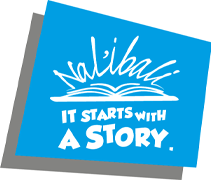Kholeka Sigenu is an award-winning author from the Eastern Cape. A former teacher and storyteller, she made it one of her life goals to help preserve the traditional African tales told to her by her grandmother. Take a look at her experience of sharing the power of stories in different languages:
A couple of years after publishing my folktales book, Ezakowethu, in my mother tongue IsiXhosa, I decided to translate it. It was important to me that the even more children should hear the stories I grew up with and learn from the morals and values they teach. My experience was both challenging and exhilarating.
The process did not feel much like a translation as I first completed the IsiXhosa book, put it aside and then self-translated it into English. I did this by rewriting it off by heart but struggled with words that could not be directly translated. I worried that the gist of the story would get lost. For example, in the English version, I used words such as: “the Nabulele Blanket”. Well, I do not know what Nabulele is!
But, my wish to share my cherished instomi to a wider audience came true! Now, Ex model-C schools in Queenstown have prescribed the isiXhosa version for Xhosa First Additional Language pupils and one of the boys enrolled for this class bought the English version, Ezakowethu: Folk Tales from Home. I asked him how he used it. He said, “I read the English version before we study it in Xhosa.” He understood it very well and I was quite pleased. In his critical analysis of The Nabulele Blanket he identified the monster that had swallowed the whole nation as the apartheid ideology that had swallowed our country. He also thought that when the people were rescued by the twins, that it signified the freedom of South Africa.
Translation has forced me to look at my tales from a completely different angle as I reword them to a new audience whose language has its own unique characteristics. To help me convey the message, I decided to illustrate most of the tales. It was very exciting when Siphiwo (my illustrator) showed me his interpretation of the stories and how the imagery in the text transcended all languages.
But, what is most exhilarating is that the Disability School for the Blind has also asked to publish the book in braille. I am pleased to have given the stories that I grew up with a place in printed literature. These stories have value, people are interested in them, and can learn from the traditional social and cultural processes reflected in them. Storytelling is one of the most important tools we have and I hope that through this book the traditional fables of the isiXhosa people will enjoy many more tellings and retellings.
